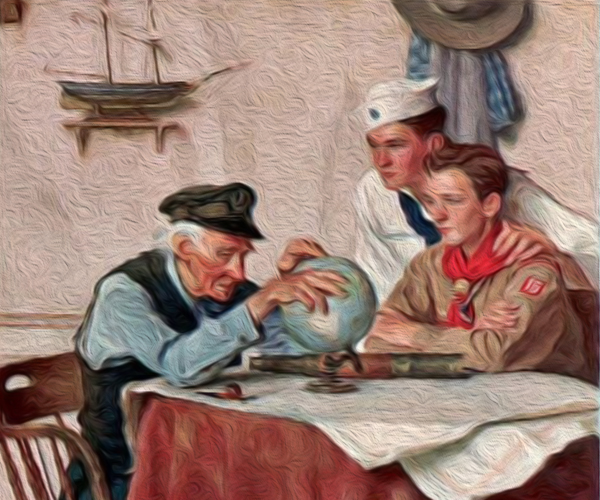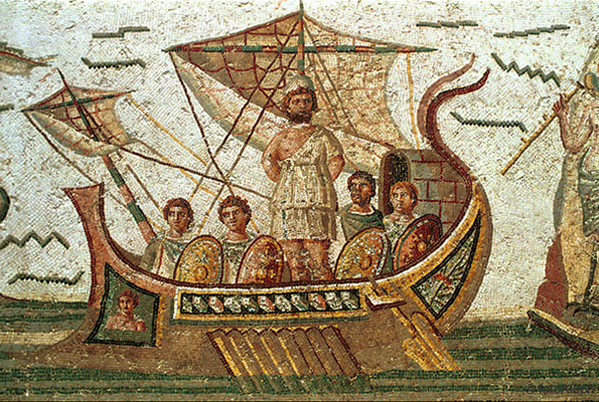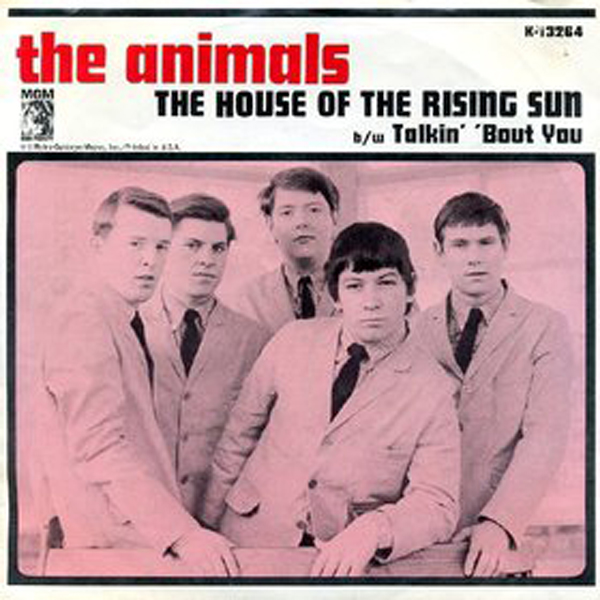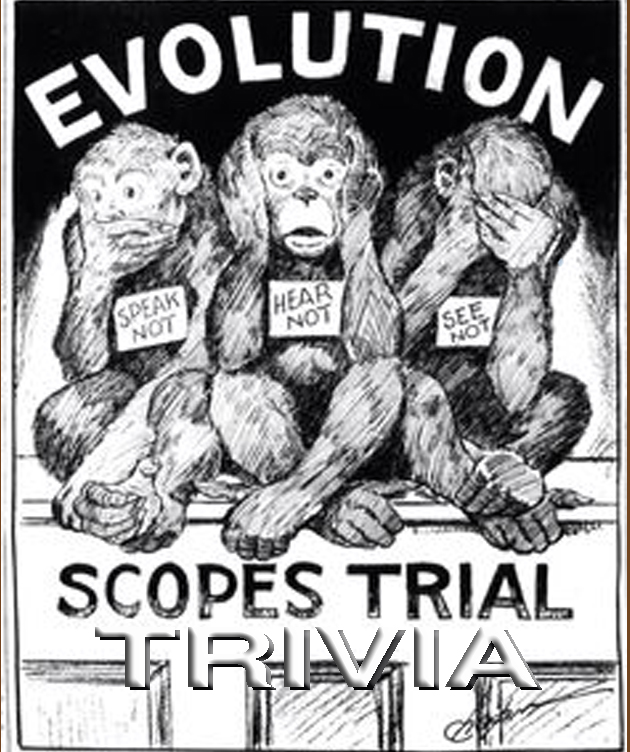
The siege of Vicksburg commences on May 18, 1863
The siege of Vicksburg commences: On this day, Union General Ulysses S. Grant surrounds Vicksburg, the last Confederate stronghold on the Mississippi River, in one of the most brilliant campaigns of the war.
Beginning in the winter of 1862-63, Grant made several attempts to capture Vicksburg. In March, he marched his army down the west bank of the Mississippi, while Union Admiral David Porter’s flotilla ran past the substantial batteries that protected the city. They met south of the city, and Grant crossed the river and entered Mississippi. He then moved north to approach Vicksburg from its more lightly defended eastern side. In May, he had to split his army to deal with a threat from Joseph Johnston’s Rebels in Jackson, the state capital that lay 40 miles east of Vicksburg. After defeating Johnston’s forces, Grant moved toward Vicksburg.
On May 16, Grant fought the Confederates under John C. Pemberton at Champion Hill and defeated them decisively. He then attacked again at the Big Black River the next day, and Pemberton fled into Vicksburg with Grant following close behind. The trap was now complete and Pemberton was stuck in Vicksburg, although his forces would hold out until July 4
In the three weeks since Grant crossed the Mississippi in the campaign to capture Vicksburg, his men marched 180 miles and won five battles. They took nearly 100 Confederate artillery pieces and nearly 6,000 prisoners, all with relatively light losses.
History Channel / Wikipedia / Britannica Encyclopedia /
Civil War.org / National Parks Service.gov / NCBI.gov (medical care at the siege of vicksburg)
The Battle of Vicksburg - 1863 (YouTube) 

Understanding Military Terminology - Measure of effectiveness
(DOD) A criterion used to assess changes in system behavior, capability, or operational environment that is tied to measuring the attainment of an end state, achievement of an objective, or creation of an effect. Also called MOE. See also combat assessment; mission.
Joint Publications (JP 3-0) (Joint Operations)

The Old Salt’s Corner
“The Odyssey”
Book III
But as the sun was rising from the fair sea into the firmament of heaven to shed light on mortals and immortals, they reached Pylos the city of Neleus. Now the people of Pylos were gathered on the sea shore to offer sacrifice of black bulls to Neptune lord of the Earthquake. There were nine guilds with five hundred men in each, and there were nine bulls to each guild. As they were eating the inward meats and burning the thigh bones [on the embers] in the name of Neptune, Telemachus and his crew arrived, furled their sails, brought their ship to anchor, and went ashore.
Minerva led the way and Telemachus followed her. Presently she said, “Telemachus, you must not be in the least shy or nervous; you have taken this voyage to try and find out where your father is buried and how he came by his end; so go straight up to Nestor that we may see what he has got to tell us. Beg of him to speak the truth, and he will tell no lies, for he is an excellent person.”
“But how, Mentor”, replied Telemachus, “dare I go up to Nestor, and how am I to address him? I have never yet been used to holding long conversations with people, and am ashamed to begin questioning one who is so much older than myself.”
“Some things, Telemachus”, answered Minerva, “will be suggested to you by your own instinct, and heaven will prompt you further; for I am assured that the gods have been with you from the time of your birth until now.”
Book III continued ...
~ Homer
Written 800 B.C.E
Translated by Samuel Butler
Table of Contents

“I’m Just Sayin”
“Without a winking smiley or other blatant display of humour, it is impossible to create a parody of fundamentalism that someone won't mistake for the real thing.”
~ Poe's law

“Thought for the Day”
“Progress is impossible without change, and those who cannot change their minds cannot change anything.”
~ George Bernard Shaw

“What I Have Learned”
“Though no one can go back
and make a brand new start,
anyone can start from now
and make a brand new beginning.”
~ Anonymous

Bizarre News (we couldn’t make up stuff this good – real news story)

Terrifying amount of prey spiders devour each year revealed for the first time
Most of their victims are insects but the largest tropical species occasionally make a meal of vertebrates such as frogs, lizards, fish and small mammals.
Spiders devour up to 800 million tons of prey each year, making them one of the world’s most voracious predators, research has shown.
Most of their victims are insects but the largest tropical species occasionally make a meal of vertebrates such as frogs, lizards, fish and small mammals, said experts.
There are more than 45,000 species of spider living in all parts of the world with a collective weight of about 25 million tons.
Together they kill between 400 million and 800 million tons of prey annually, a team of Swiss and Swedish scientists has calculated.
In comparison, all the humans on Earth consume about 400 million tons of meat and fish each year, according to the United Nations Food and Agriculture Organisation.
The appetite of spiders even exceeds that of whales, which get through an estimated 280 million to 500 million tons of prey a year.
Mirror (03/14/2017) 

Mr. Answer Man Please Tell Us: What Do They Use to Dye the Chicago River Green?
A bit of history: The dyeing tradition became an annual thing more than half a century ago, in 1962, but its real origins go back even further. In the early days of his administration as Mayor of Chicago, Richard J. Daley was a man on a mission to develop the city’s riverfront area. There was just one problem: The river itself was a sewage-filled eyesore. In order to get to the bottom of the city’s pollution problem and pinpoint the exact places where waste was being discarded into the waterway (and by whom), Daley authorized the pouring of a special green dye into the river that would allow them to see exactly where dumping was occurring.
Late 1961 when Stephen Bailey—part of the Chicago Journeymen Plumbers Local, the city’s St. Patrick’s Day Parade chairman, and a childhood friend of Daley’s—witnessed a colleague’s green-soaked coveralls following a day of pouring Daley’s dye into the Chicago River. That gave Bailey an idea: If they could streak the Chicago River green, why not turn it all green?
Unfortunately, the dye that was intended to help spot pollution was an oil-based fluorescein that many environmentalists warned was actually damaging the river even more. After fierce lobbying, eco-minded heads prevailed and in 1966 the parade organizers began using a powdered, vegetable-based dye.
While the exact formula for the orange powder (yes, it's orange until it's mixed with water) is kept top-secret—in 2003 one of the parade organizers told a reporter that revealing the formula would be akin to “telling where the leprechaun hides its gold” — there are plenty of details that the committee lets even non-leprechauns in on:
The dyeing process begins at 9:15 a.m. on the morning of the parade (which is always held on a Saturday) when six members of the local Plumbers Union hop aboard two boats, four of them on the larger vessel, the remaining two on a smaller boat.
The larger boat heads out onto the water first, with three members of the crew using flour sifters to spread the dye into the river. The smaller boat follows closely behind in order to help disperse the substance.
Approximately 45 minutes later, the Chicago River is green!
These days, the color only sticks around for about five hours. Which is roughly the same amount of time it takes to get a perfectly poured pint of Guinness if you venture out to an Irish pub on St. Patrick’s Day.
(Redeye - Chicago Tribune)
• Daily Mail
• People
• Mental Floss
• Quora
• Wikipedia

Where Did That Saying Come From?
“Gone Haywire” Meaning: In a mess. To go wrong, to become overly excited or deranged.
Origin: Hay-wire is the light wire that was used in baling machines to tie up bales of hay.
At the turn of the 20th century the expression “a haywire outfit” began to be used in the United States. This was used to describe companies that patched-up faulty machinery using such wire, rather than making proper long-term fixes.
In 1905, The U.S. Forestry Bureau Bulletin described a “Hay wire outfit” as “a contemptuous term for loggers with poor logging equipment”.
By 1920, the use of haywire meant “awry” or “out of control”. To go haywire was recorded in the late 1920s; for example, in this piece about a basketball game from The Helena Independent, January 1928:
“...their anxiety to score let their passing game go haywire with many wild heaves finding marks in the bleachers.”
Phrases.org UK


NAVSPEAK aka U.S. Navy Slang
Oscar: The buoyant dummy used during man-overboard drills. Named for the Oscar flag that is flown during a man overboard evolution. If a sailor is “nominated for an Oscar”, someone has suggested that sailor be thrown overboard.
Oscar Sierra: Radio brevity code for a nuclear weapons mishap. Supposedly from the first letters of the words “Oh Shit”.
Ouija Board/Wee-Gee Board: Flat board with small airplanes, bolts, etc. that can be moved around to indicate aircraft position and status on an aircraft carrier.
Out of sight hi/lo: Steam boiler casualty in which the water level in the steam drum gauge glass goes out the top/bottom, requiring the boiler to be immediately shut down to prevent water hitting the turbine blades (hi) or melting boiler tubes (lo). If operating on one boiler at the time of the casualty, the ship then goes “dark and quiet” as all power and propulsion is lost.
Overhead: Ceiling.


Just for you MARINE
Platoon Sergeant: SNCO (Staff Non-Commissioned Officer), executive to the platoon commander, usually the senior enlisted man.
PMCM: Equipment such as aircraft that are partially mission capable due to maintenance that needs to be performed. Parts are available but not manpower.
PMCS: Preventive Maintenance Checks and Servicetive to the platoon commander, usually the senior enlisted man.
PMO: Provost Marshal's Office, the military police force of a Marine installation.
P.O.A.: Position Of Attention.

Naval Aviation Squadron Nicknames
VX-1 - Operational Test and Evaluation Force: “Pioneers”
Evaluation of airborne anti-submarine warfare and maritime anti-surface warfare weapons, Naval Air Station Patuxent River, Maryland

Science & Technology

Researchers develop groundbreaking process for creating ultra-selective separation membranes
• Dark matter less influential in galaxies in early universe
• Fossil or inorganic structure? Scientists dig into early life forms
• Quantum movement of electrons in atomic layers shows potential of materials for ele
• Protostar blazes bright, reshaping its stellar nursery
• New flexible sensor holds potential for foldable touch screens
Phys.org

The Strange, Mysterious or Downright Weird

Profound implications
Relativity is one of the most famous scientific theories of the 20th century, but how well does it explain the things we see in our daily lives?
Formulated by Albert Einstein in 1905, the theory of relativity is the notion that the laws of physics are the same everywhere. The theory explains the behavior of objects in space and time, and it can be used to predict everything from the existence of black holes, to light bending due to gravity, to the behavior of the planet Mercury in its orbit.
The theory is deceptively simple. First, there is no “absolute” frame of reference. Every time you measure an object's velocity, or its momentum, or how it experiences time, it's always in relation to something else. Second, the speed of light is the same no matter who measures it or how fast the person measuring it is going. Third, nothing can go faster than light. [Twisted Physics: 7 Mind-Blowing Findings]
The implications of Einstein's most famous theory are profound. If the speed of light is always the same, it means that an astronaut going very fast relative to the Earth will measure the seconds ticking by slower than an Earthbound observer will — time essentially slows down for the astronaut, a phenomenon called time dilation.
Any object in a big gravity field is accelerating, so it will also experience time dilation. Meanwhile, the astronaut's spaceship will experience length contraction, which means that if you took a picture of the spacecraft as it flew by, it would look as though it were "squished" in the direction of motion. To the astronaut on board, however, all would seem normal. In addition, the mass of the spaceship would appear to increase from the point of view of people on Earth.
But you don't necessarily need a spaceship zooming at near the speed of light to see relativistic effects. In fact, there are several instances of relativity that we can see in our daily lives, and even technologies we use today that demonstrate that Einstein was right. Here are some ways we see relativity in action.
Live Science (03/14/2017) 


SONG FACTS

“House Of The Rising Sun” - The Animals
Album: The Animals
Released 1964 
Historians have not been able to definitively identify The House Of The Rising Sun, but here are the two most popular theories:
1.) The song is about a brothel in New Orleans. “The House Of The Rising Sun” was named after Madame Marianne LeSoleil Levant (which means “Rising Sun” in French) and was open for business from 1862 (occupation by Union troops) until 1874, when it was closed due to complaints by neighbors. It was located at 826-830 St. Louis Steet.
2.) It's about a women's prison in New Orleans called the Orleans Parish women's prison, which had an entrance gate adorned with rising sun artwork. This would explain the “ball and chain” lyrics in the song.
The melody is a traditional English ballad, but the song became popular as an African-American folk song. It was recorded by Texas Alexander in the 1920s, then by a number of other artists including Leadbelly, Woody Guthrie, Josh White and later Nina Simone. It was her version The Animals first heard. No one can claim rights to the song, meaning it can be recorded and sold royalty-free. Many bands covered the song after it became a hit for The Animals.
The folk music historian Alan Lomax recorded a version in 1937 by a 16-year-old girl named Georgia Turner. In this context, it is sung in the first person, present tense with the singer lamenting how the House of the Rising Sun has ruined her life. In this traditional folk version, the main character is either a prostitute or a prisoner. The Animals changed it to a gambler to make their version more radio-friendly.
The Animals performed this song while touring England with Chuck Berry. It went over so well that they recorded it between stops on the tour. In our 2010 interview with Animals lead singer Eric Burdon, he explained: “'House of the Rising Sun' is a song that I was just fated to. It was made for me and I was made for it. It was a great song for the Chuck Berry tour because it was a way of reaching the audience without copying Chuck Berry. It was a great trick and it worked. It actually wasn't only a great trick, it was a great recording. The best aspect of it, I've been told, is that Bob Dylan, who was angry at first, turned into a rocker. Dylan went electric in the shadow of The Animals classic “House of the Rising Sun”.
Bob Dylan recorded this on his first album. The Animals version was one of the first songs to put a rock rhythm to a rolk song, something Dylan did a lot soon after.
This was the first song since 1962 by a British band to hit #1 in America that was not written by John Lennon and Paul McCartney.
This was the first international hit Mickie Most produced. An Englishman, Most went to South Africa in 1959 and formed a band called Mickie Most and his Playboys. Since rock music had not come to the country, Most recorded popular songs like “Johnny B. Goode”  and “Shake, Rattle And Roll”
and “Shake, Rattle And Roll”  , running up a string of hits. Upon returning to England in 1962, he turned to production work, since he had honed his songcraft skills in South Africa.
, running up a string of hits. Upon returning to England in 1962, he turned to production work, since he had honed his songcraft skills in South Africa.
Most quickly became the top producer in England, adding Herman's Hermits, Donovan, Lulu and Jeff Beck to his roster.
The Animals had 13 more Top 40 hits in the U.S., becoming one of the most successful British Invasion bands in the United States. They split up in 1968 over various music and business issues. Burdon said: “I don't think that The Animals got a chance to evolve. We were the first to admit that we took Blues songs from American artists, but if the Animals had stuck together and worked together instead of worrying about who was getting all the money, we could have evolved more and come out with more music to be proud of.”
Alan Price was the only band member given credit for arranging the track, meaning he is paid almost all the royalties. Their record company told the other members that there was not enough room to list them as arrangers.
The organ solo was inspired by jazzman Jimmy Smith's hit “Walk on the Wild Side”  . Alan Price performed the solo on a Vox Continental.
. Alan Price performed the solo on a Vox Continental.
The Animals, official site / Billboard / All Music / Song Facts / Ultimate Classic Rock / Wikipedia
Image: “The Animals (American album)” - “The Animals (British album)” by The Animals

Trivia
● In 1925 in Tennessee JOHN SCOPES, a teacher went on trial for teaching Charles Darwin's theory of evolution. CLARENCE DARROW was the lawyer for the defendant and WILLIAM JENNINGS BRYAN was the lawyer for the prosecution... he was first convicted, then acquitted on a technicality.
● When we see statues of military heroes of horseback, the position of the horse's feet often signify something. If the horse's two front feet are rearing up in the air the RIDER DIED IN BATTLE.
● In the late 19th century, Afghanistan was a buffer state in the “Great Game” between the British and Russian empires.

A Test for People Who Know Everything
From the Jeopardy Archives Category - “ANIMAL NAMES” ($600):
Floating in the waters off Majorca, you might find the fried egg this - we don't suggest it for breakfast.
● Answer for People Who Do Not Know Everything, or Want to Verify Their Answer Daily Mail
Answer to Last Week's Test
From the Jeopardy Archives Category - 1933 ($300):
They're the opening 12 words of “A Tale of Two Cities”
Answer: “It was the best of times, it was the worst of times”. Quora

Joke of the Day
A sinner dies, goes to hell, and finds himself being escorted by the Devil along a dark corridor leading to a series of dungeons. As they pass the first dungeon, he peeks inside and sees thousands of people being whipped repeatedly and screaming in horrible agony.
“Who are they?” he asks the Devil.
“Those are Catholics who ate meat on Fridays”, the Devil explains.
They pass a second dungeon, where he sees thousands of shrieking people being stretched on racks.
“Who are they?” the new arrival asks.
“Those are Jews and Muslims who ate pork”, the Devil replies.
They come to a third dungeon where people are being boiled in oil and screaming even more horribly than the inmates of the first two dungeons.
“Who are they?” the sinner asks.
“Those”, the devil says, “are Episcopalians who ate their entrée with their salad fork.”

“Police Squad!”
Police Squad! Intro [In Color]
Frank Drebin - I shot twice once!:
Abbott and Costello would be so proud. “Who's on first?” “I don't know.” “I don't know is on 3rd.” “What?”. “What's on second.” “Who's on second.” “No, Who is on first.” “I DON'T KNOW". “I don't know is on 3rd.”
Police Squad Lockstore: “You got a nice key store. What about my keister?”
Just a little hunchback at the office
~ “Police Squad!” - “Epidodes (YouTube)” (1982)  Created By: Jim Abrahams, David Zucker and Jerry Zucker
Created By: Jim Abrahams, David Zucker and Jerry Zucker



























